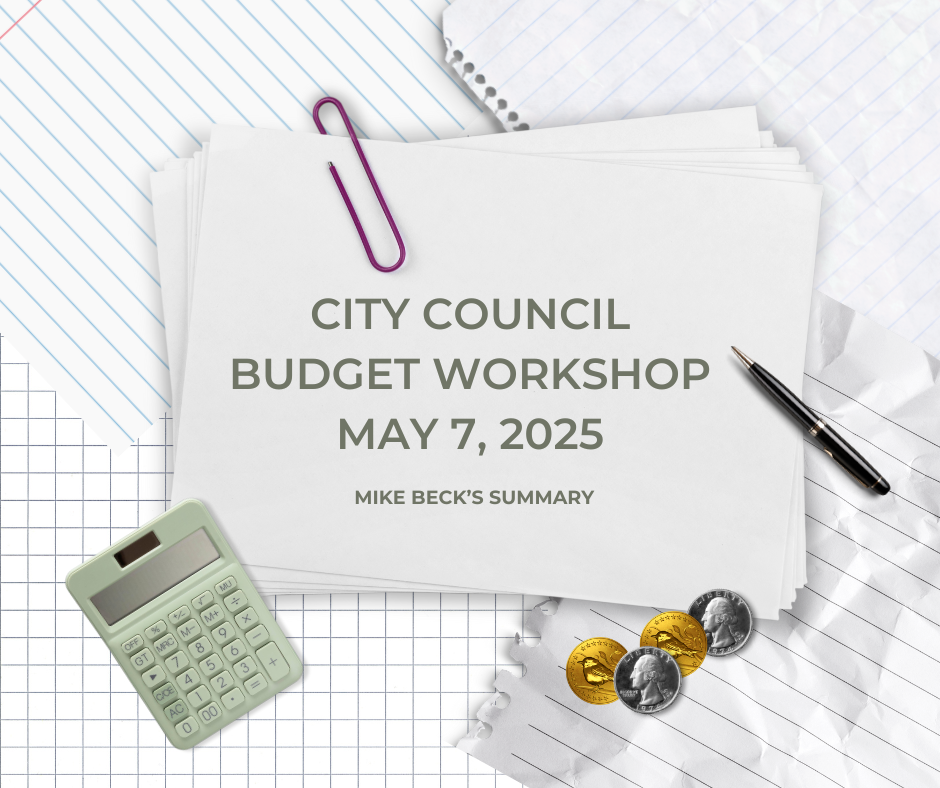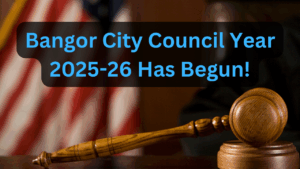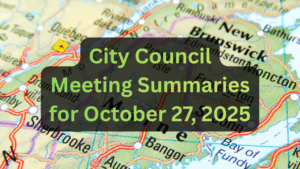
Disclaimer: The views I express here are my own and should NOT be construed as speaking for the City of Bangor or the City Council of Bangor.
You can read the agenda for this meeting by clicking here.
You can read the entire proposed budget for Bangor, Maine’s Fiscal Year 2026 by clicking here.
Assessing Update
Our Assessor reported that market-based adjustments for residential and small multifamily properties could be lowered. While median sale prices rose significantly between July and December 2024, they had returned to July 2024 levels by March 2025, suggesting market stabilization. The days on market for properties have risen from a low of 5 to 44, although this is still considered historically low. Zillow forecasts a generally flat real estate market for Bangor and most other Maine communities over the next year.
The upcoming 2026 revaluation aims to set property values at approximately 100% of market value. Current modified adjustments are intended to bridge about half the gap from the present ~83% valuation. Proposed neighborhood adjustments have been reduced from a 12-14% increase to a 6-7% increase, though these are still deemed necessary for maintaining equitable property values across different areas. The average adjustment for single-family homes and condos in Bangor is around 8.1%, with the average assessed value now at about $265,000. Despite these changes, the city expects to maintain a 100% certified ratio with the state, with the midquartile mean statistic at 91%. Overall, while the city’s total value saw a $40 million drop due to these adjustments, new growth combined with market adjustments means the city’s value is nearly 6% higher than the previous year. An update regarding personal property values was anticipated by the end of the following week.
Budget Impacts and Paid Family Medical Leave
A significant development was the Finance Committee’s recommendation to transition to a commercial plan for paid family medical leave, a move projected to save approximately $850,000. These savings, along with the aforementioned valuation changes, have allowed the proposed average property tax increase for residential homeowners to decrease from 7.8% to about 4.9%. The council plans to continue its evaluation of personnel and other budget assumptions.
Downtown TIF (Tax Increment Financing)
The proposed budget for the Downtown TIF outlines approximately $4.3 million in expenditures, which will not affect the mill rate. These funds are earmarked for a variety of projects including debt service for the Columbia Street parking deck and the arena, development agreements, Court Street demolition debt service, the Village Partnership project, improvements to downtown sidewalks and pedestrian areas, downtown amenities and marketing, redevelopment of the bulkhead, retaining wall maintenance, economic development support, lighting upgrades, a generator for Pickering Square, Penobscot River remediation efforts, funding for the Cross Insurance Center reserve, monument restoration, fence repairs, support for the Downtown Bangor Partnership position, downtown visitor safety services ($230,000 for StreetPlus service aka Ambassador Program), and the installation of new waterfront cameras. Some sidewalk and traffic signal projects will utilize funds remaining from previous years.
Public Services
The Public Services budget includes $1.9 million in anticipated revenue, a slight increase attributed to solid waste disposal fees. Expenditures are set at $13.291 million, an increase from the previous year’s $12.7 million, driven by changes in payroll, curbside removal costs, utilities, parts, and insurance. A request for a new compact excavator is not currently funded within this budget. Capital plans amount to $7.9 million, designated for paving, vehicle and equipment replacement, and infrastructure improvements, to be funded through the annual budget, bonds, and reserve funds. Department priorities include constructing a new equipment storage area, establishing an accident review committee, expanding training programs, developing an urban forest management plan and an EAB (Emerald Ash Borer) response plan, updating inventory tracking systems, and seeking new grant opportunities. There was a discussion about the possibility of shifting some capital costs from the operating budget to reserve funds to lessen the tax burden on residents. The Finance Director clarified the current allocation strategy, noting that reserves are not being augmented this year as many positions have been successfully filled.
Downtown Special Assessment District (Downtown Bangor Partnership)
The Executive Director of the Downtown Bangor Partnership presented their budget request, highlighting major investments in marketing, events, and beautification projects for the downtown area. According to the Executive Director, marketing efforts have proven successful, with an increasing focus on tourism, especially from areas with direct flight connections to Bangor and from Central and Southern Maine. Notably, tourism from Cumberland County to Penobscot County has seen growth. Collaborative holiday and summer campaigns with Community and Economic Development were also successful. A grant proposal was submitted to enhance the underpass near Sea Dog, aiming to improve connectivity between the waterfront and historic downtown. The proposed budget includes a 7% increase in the downtown tax rate (from 65 cents to 72 cents per thousand of assessed value). This increase is intended to cover expanded marketing initiatives, payroll, and the downtown ambassadors program, and would also transition the Director to a full-time employee. The Partnership benefits from cooperation with the airport, which provides space and opportunities for promotional materials and digital kiosks, although no direct funding is exchanged. A request for more detailed financial information, including actuals, a balance sheet, and year-to-date figures, was made for the next meeting.
Executive Department
The Executive Department budget, which encompasses the City Manager’s Office, Risk & Safety, and Human Resources, showed a decrease in revenue. This was due to the ARPA-funded Homeless Response Manager position being moved to Health and Community Services. Operating expenses saw an increase of approximately $60,000, primarily due to payroll, insurance, and contractual service costs. Key priorities for the department include welcoming the new city manager, the upcoming relocation back to City Hall, updating personnel rules and regulations, launching a new intranet system for employees, enhancing the city website, reviewing the current communication strategy, engaging in collective bargaining, managing ARPA reporting, and hiring a new safety environmental manager. The new intranet system is integrated into the existing city website and will provide employees with access to forms and plan information.
Finance Department
The Finance Department’s budget, covering Financial Services, City Hall, Central Services, and Information Services, reported stable revenues. Expenditures rose slightly by $45,000 due to payroll, maintenance, and computer software/hardware costs, though a reduction in anticipated utility costs was also noted. Two new, currently unfunded positions were requested: a Cyber Security Analyst and a Cloud Security Analyst. These roles are proposed to proactively address anticipated national cyber security requirements for public transportation and wastewater treatment facilities, and to manage the security of cloud-based programs. The City Hall capital plan of $225,000 for renovations and staff relocation is proposed to be funded from reserves. The Information Services capital proposal of $547,000 includes computer replacements, a citywide switch program, and $225,000 for a new integrated financial, land use, and HR system, with a bid planned for the next year.
A request for a new slitter/cutter/creaser for Central Services was not recommended for funding. I requested a return on investment analysis for that piece of equipment, as we are currently outsourcing that work. My think was if this is something that pays for itself within a few years, it is worth exploring. That will be a future discussion in this process.
Departmental priorities include the implementation of financial statements, staff development, overseeing the City Hall renovation progress, replacing aging IT infrastructure, establishing fiber redundant connections, and improving connectivity between the airport, control tower, and the National Guard. Questions were raised about the costs associated with the citywide switch upgrade and the $750,000 allocated for new software ($255,000 from unassigned fund balance this year, the rest from previous years). I made a request for more detail on the preliminary research or quotes that supported the budget figure, which I believe will be addressed at a future budget workshop.
The workshop concluded with an explanation for the increase in solid waste disposal fees, which was partly attributed to a rise in commercial waste volume.





